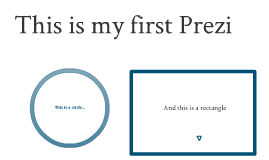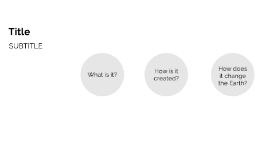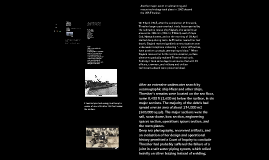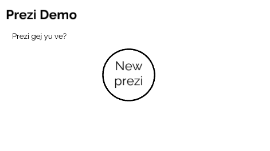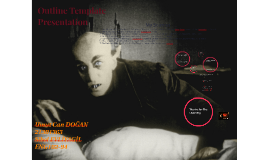Blank template
Transcript: A history of submarines 1580 The first published prescription for a submarine came from the pen of WILLIAM BOURNE, an English innkeeper and scientific dilettante. Bourne first offered a lucid description of why a ship floats – by displacing its weight of water -- and then described a mechanism by which: "It is possible to make a Ship or Boate that may goe under the water unto the bottome, and so to come up again at your pleasure. [If] Any magnitude of body that is in the water . . . having alwaies but one weight, may be made bigger or lesser, then it Shall swimme when you would, and sinke when you list . . . ." 1623 Dutchman CORNELIUS DREBBEL, hired in 1603 as "court inventor" for James I of England, built what seems to have been the first working submarine. According to accounts, some of which may have been written by people who actually saw the submarine, it was a decked-over rowboat, propelled by twelve oarsmen, which made a submerged journey down the Thames River at a depth of about fifteen feet. There are no credible illustrations of Drebbel's boat, and no credible explanations of how it worked. Best guess: the boat was designed to have almost-neutral buoyancy, floating just awash, with a downward-sloping foredeck to act as a sort of diving plane. The boat would be driven under the surface by forward momentum . . . just as are most modern submarines. When the rowers stopped rowing, the boat would slowly rise. Reports that Drebbel's patron, James I, witnessed a demonstration, may be true. Reports that James I took an underwater ride are most unlikely. 1654 The 72-foot-long "Rotterdam Boat," designed by a Frenchman (named DE SON) was probably the first underwater vessel specifically built (by the council of the Southern Netherlands) to attack an enemy (the English Navy). This almost submarine – a semi-submerged ram – was supposed to sneak up unobserved and punch a hole in an enemy ship. The designer boasted that it could cross the English Channel and back in a day, and sink a hundred ships along the way. 1729 English house-carpenter NATHANIEL SYMONS created a one-man expanding/contracting sinking boat – no locomotion – as a sort of public entertainment. Sealed up inside, in front of a crowd of spectators, he cranked the two parts of his telescopic hull together, spent forty-five minutes underwater, then expanded the hull, rose to the surface, and passed the hat. One man gave him a coin. Now it gets really interesting!! People start to take real chances with their lives! 1776 Yale graduate DAVID BUSHNELL (‘75) built the first submarine to actually make an attack on an enemy warship. Dubbed the "Turtle" because it resembled a sea-turtle floating vertically in the water, it was operated by Sergeant Ezra Lee. The scheme: be towed into the vicinity of the target; open a foot-operated valve to let in enough water to sink, close the valve; move in under the enemy by cranking the two propellers – one for forward and one for vertical movement – turned by foot treadle "like a spinning wheel;" drill into the hull to attach a 150-pound keg of gunpowder with a clockwork detonator; crank to get away; operate a foot-pump to get the water out of the hull and thus re-surface. In early-morning darkness on September 7, 1776, "Turtle" made an attack on a British ship in New York harbor, probably HMS Eagle. The drill may have hit an iron strap – it would not penetrate the hull. (Contrary to most reports, the Eagle of 1776 had not been fitted with a copper-sheathed bottom.) Lee became disoriented, soon bobbed to the surface and was spotted by a lookout. He managed to get away. 5:38-8:25 Several other submariners tried and failed, until 1861. The CSS Hunley is a story of true grit in the face of overwhemling odds and desperate circumstances. 1861 Early in the Civil War, the Confederate Government authorized citizens to operate armed warships as "privateers." A New Orleans consortium headed by cotton broker HORACE L. HUNLEY was approved for the operation of "Pioneer," a 20-foot long three-man submarine (one to steer, two to crank the propeller) designed and built by JAMES MCCLINTOCK . In a March 1862 demonstration on Lake Pontchartrain, a submerged "Pioneer" sank a barge with a towed floating torpedo. In April, 1862, the U. S. Navy captured New Orleans, and "Pioneer" was scuttled by its builders. Soon discovered, the boat eventually was sold for scrap in 1868. The Pioneer, and a second model, the American Diver, failed. Undeterred, Horace Hunley consortium built a third submarine. This submarine was about 40 feet long. Crew: possibly nine, eight to crank the propeller and at least one to steer and operate the sea cocks and hand-pumps to control water level in the ballast tanks. This submarine was sent to Charleston, to try to break the Federal blockade. Almost immediately, it, too, sank -- possibly twice, swamped by the wake of a passing steamer, with the loss of some crewmembers. Confederate Commanding General P. G. T.







